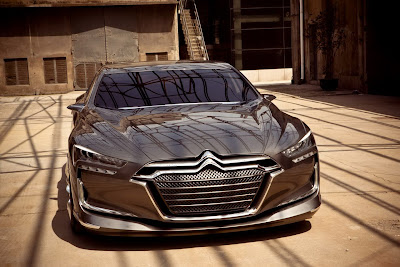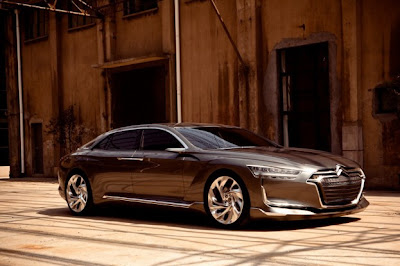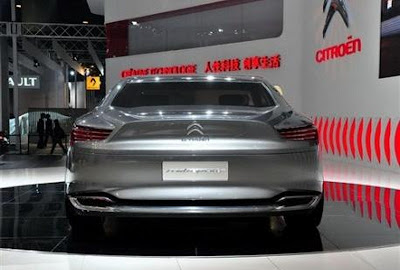Last month Citroen released the first teaser images of its new 2013 Citroen DS9 flagship, and now the French carmaker has revealed the car in all its glory ahead of its world debut at next week’s Beijing motor show. The unveiling of the Citroen DS9 is timely as it coincides with the launch of the Citroen DS3, Citroen Citroen DS4 and Citroen DS5 models in the burgeoning Chinese market. The Citroen DS range has already racked up more than 200,000 sales in its primary (mainly European) markets, and Citroen aims to build on this volume by rolling out these models in emerging markets such as Russia, Brazil and China during the course of this year.
Getting back to the 2012 Citroen DS9 Concept, it measures 4930mm from bumper to bumper and 1940mm across the bows (around 30mm longer and 40mm wider than a Holden Commodore), so it’s clearly no minnow. Its 3000mm wheelbase also eclipses that of the Commodore by around 85mm. However, the Citroen’s size is partially disguised by the fact that it stands just 1270mm tall. Of course this is just a concept car, so it’s reasonable to expect the eventual production model will be far less radical in execution. Also likely to get the flick are the huge 21-inch ‘turbine’ rims that help optimise airflow around the flanks.
For what it’s worth, the Numéro 9’s styling is said to provide clues to the design theme that will grace the next three DS line models a C segment premium sedan, an SUV and a D-segment executive saloon. Whether or not the so-called ‘shooting brake’ proportions of the Citroen DS9 carries through to any of the production models remains to be seen. Nestled under the DS9’s long snout is a cutting-edge hybrid drivetrain that comprises a 1.6-litre turbo petrol engine with 165kW/275Nm, mated to a rear-axle electric motor with 52kW and 200Nm. According to Citroen, the electric motor is powered by lithium -ion batteries that can be recharged in just 3½ hours from a normal domestic socket, and the vehicle allegedly has a range of 50km in all-electric ZEV (Zero Emission Vehicle) mode.
However, when the throttle is flattened, a ‘boost’ function combines the power of the combustion engine and electric motor to enable a 5.4sec 0-100km/h split, while v-max is quoted at 244km/h. What’s more, in difficult conditions, such as driving up a sloping, snow-covered road, the driver can manually select 4WD mode. Citroen claims the all-paw system and hydraulic active suspension then deliver increased traction to boost safety.



 11:26 AM
11:26 AM




 Posted in:
Posted in: 




0 comments:
Post a Comment